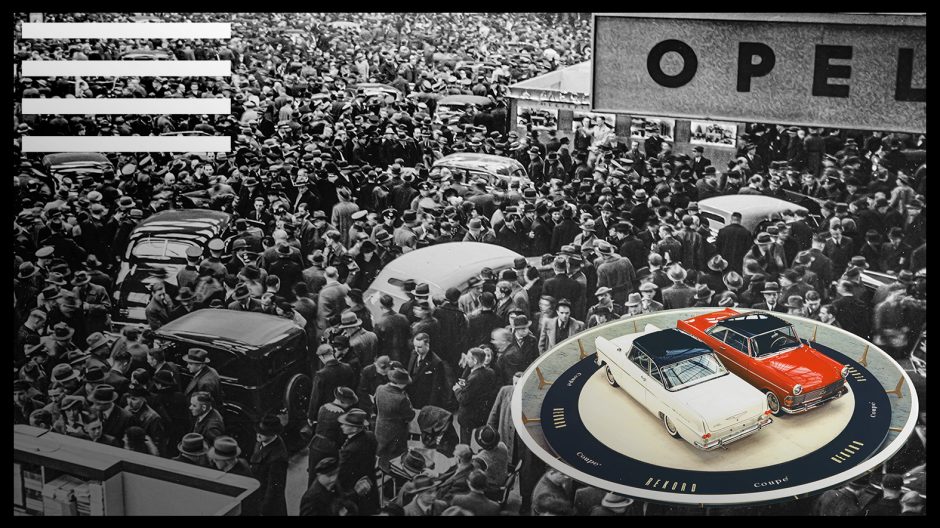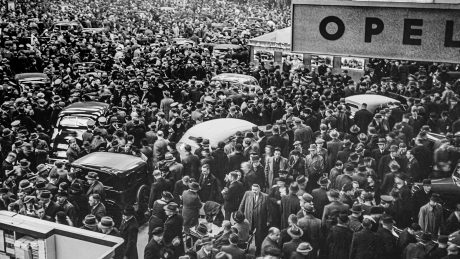In 1897, the first IAA starts as the “International Motor Show Berlin”
The 68th IAA International Motor Show in Frankfurt has been open to the public since September 12 and runs until September 22. The IAA proudly looks back at a long tradition that began in 1897 when the “International Motor Show Berlin” took place – the first small motor show in Germany. Opel was there right from the start, initially as a kind of start-up that began producing its first cars in 1899. 120 years later, Opel celebrates major world premieres in Frankfurt with the sixth Corsa generation, the new Astra and the Grandland X, the automaker‘s first plug-in hybrid. Opel‘s IAA history began on a radiant early autumn day in the German capital.
![]()
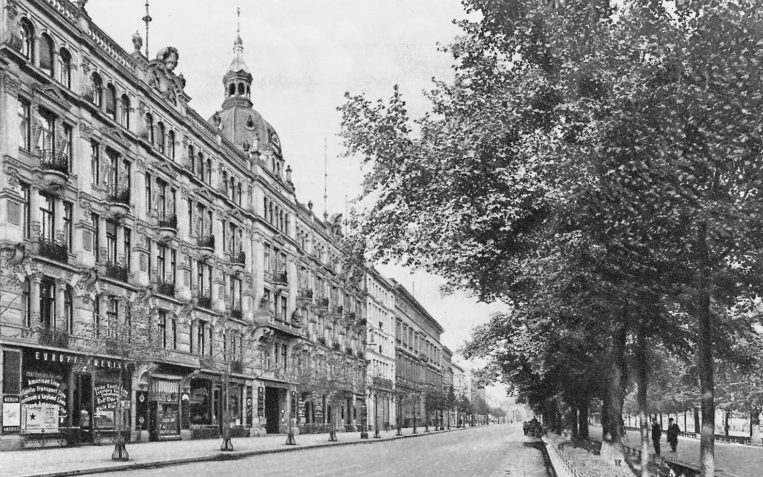
Here it starts: The first International Motor Show Berlin takes place at the Hotel Bristol (the photo was taken around 1900).
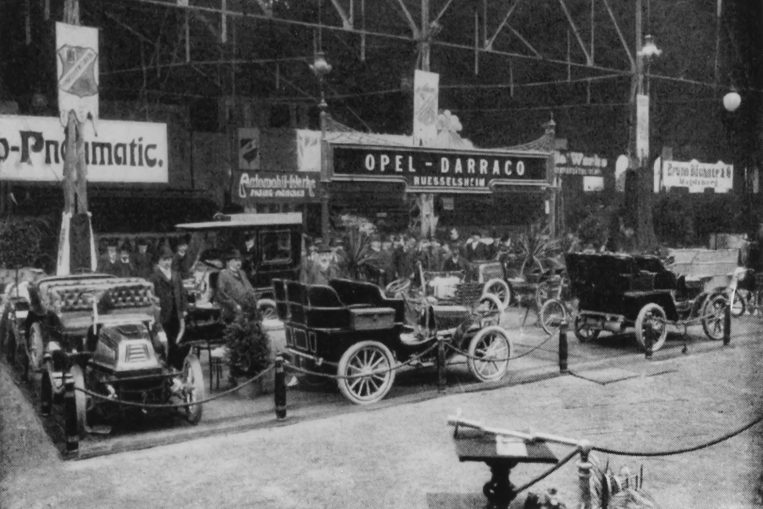
Increased interest: From 1902 to 1911, ten major motor shows take place in Germany. The photo shows an exhibition in Hamburg.
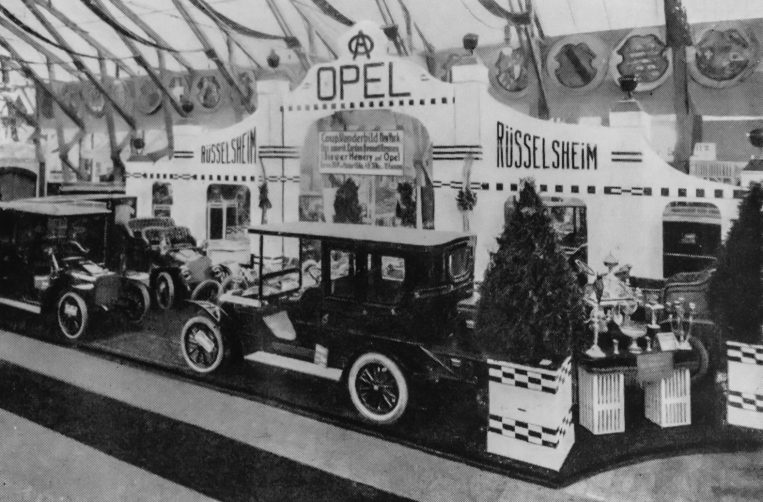
1905: The Opel stand at the IAA in Frankfurt am Main.
![]()

![]()
Eight motor coaches make the start – Opel enters the business in 1899
On September 30, 1897, the first German automobile exhibition took place in the heart of Berlin. Eight resplendently polished motor coaches stood on the boulevard “Unter den Linden” in front of the posh Hotel Bristol. The occasion was the founding meeting of the Central European Motor Car Association, followed by a drive through the Grunewald forest. And although Opel had not yet started building cars, the Rüsselsheim-based company was already part of the gathering.
Wilhelm and Fritz Opel, two of Sophie and Adam Opel‘s five sons, had an appointment with car pioneer Friedrich Lutzmann. Lutzmann travelled from Dessau to Berlin with two of his motorcars. His appearance at the “International Motor Car Exhibition Berlin 1897” became the basis for the famous business deal sealed on January 21, 1899, when Opel took over Lutzmann’s Anhaltische Motorwagenfabrik and entered the automobile business. Just two years later, almost 100,000 visitors attended the “International Motor Car Exhibition Berlin 1899”. Friedrich Lutzmann was again there to attract customers – this time for the Opel motor cars from Rüsselsheim that he designed.
From the turn of the century, public interest in motor vehicles continued to grow. Between 1902 and 1911, ten major motor shows took place in Germany – mostly in Berlin, but also in Frankfurt am Main (March 1904 and October 1905). The young car brand Opel was always an enthusiastic participant.
Interest rises after the turn of the century – and quickly leads to exhibition fatigue
From 1902, on motor show stands increasingly extravagantly decorated with palm trees, oriental carpets and chains of electric lights, modern cars with front engines quickly relegated the early motor coaches à la Lutzmann to oblivion. The exhibition fatigue that could be felt at the end of the decade was countered with a new approach: more restraint and more clarity was the concept from the VDMI, the forerunner of today’s VDA (German Association of the Automotive Industry). However, the construction of a new exhibition hall on Berlin’s Kaiserdamm, planned for 1913, was put off until 1921 due to the war.
![]()
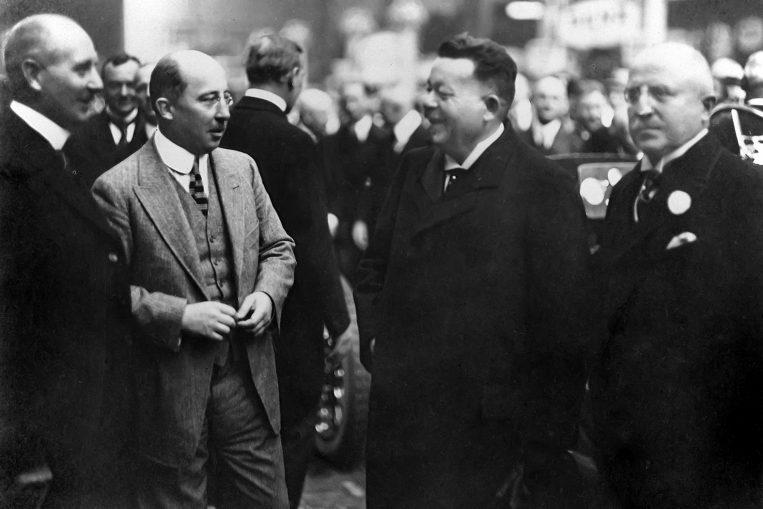
1924: Friedrich Ebert (2nd from right), first Reich President of the Weimar Republic, with the brothers Wilhelm (right) and Heinrich von Opel (2nd from left) at the Berlin Motor Show.
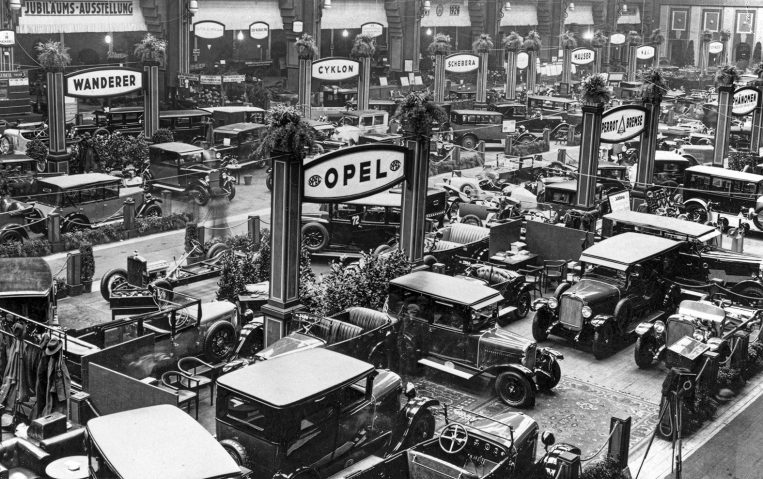
1926: The Opel stand at the German Motor Show in Berlin.
![]()

![]()
Mass rush into the
20s – more and more
companies flood the fair
Although no foreign exhibitors were present, 300,000 visitors flocked to the “German Automobile Exhibition 1921”. Due to the huge crowds, access to the exhibition grounds had to be temporarily halted. A special attraction at the start of the fair was the first car race at the nearby AVUS track. The celebrated winner was Fritz von Opel.
The events of the following years were similarly successful, with 653 international companies already exhibiting in Berlin in 1923. In 1924 the new “Hall II” was opened, where motorcycles, commercial vehicles and accessories were exhibited. The same year in “Hall I”, the spotlight was on the new Opel 4 PS Laubfrosch (Tree Frog): small and compact, with a striking radiator front and centre. The perky two-seater only came in green and cost just 4,500 Rentenmark, an absolute sensation. This was made possible by the ultra-modern assembly line in Rüsselsheim. The Laubfrosch was affordable for a broad public and democratised automotive mobility. The star at the 1928 trade fair was a completely different calibre: Opel presented the stately 24/110 hp Regent with an eight-cylinder in-line engine at the newly opened Berlin Radio Tower.
![]()
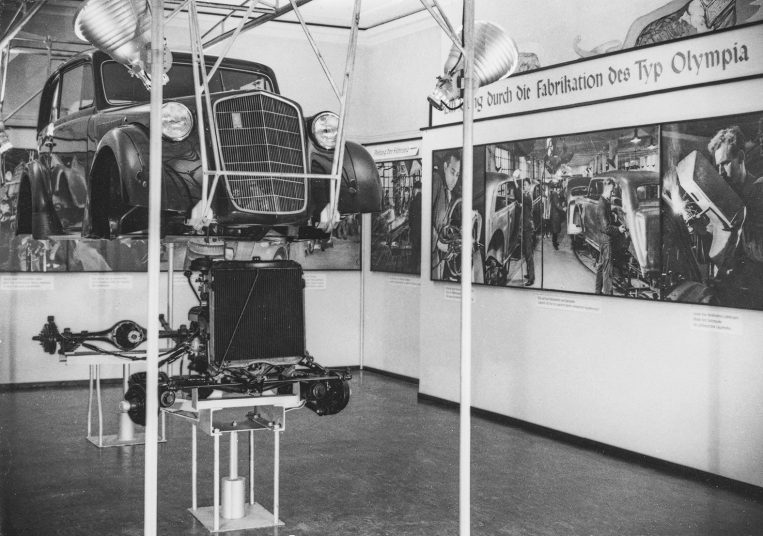
1936: Opel brings an Olympic foam model to the IAMA in Berlin.
![]()

![]()
With its advanced production capabilities, Opel was able to meet the growing demand for more vehicles in the 1930s. The new “Blitz” truck was just one example. The trade fair appearances of the Rüsselsheim-based company in Berlin were correspondingly self-confident and modern. Numerous successful Opel models made their debut at the Radio Tower before the beginning of World War II: 1.8 Liter, P4, Olympia, Admiral, Kadett, Kapitän. As motorcycles were also shown at the exhibitions, the trade fair was now called the International Automobile and Motorcycle Exhibition (IAMA).
From 1933, the show increasingly came under the influence of the Nazi propaganda ministry, as exemplified by the newly established “Hall of Honour”. The IAMA 1939 saw a record number of 825,000 visitors. Then it was over.
Modern appearances in the
30s – 1939 with
visitor record
![]()
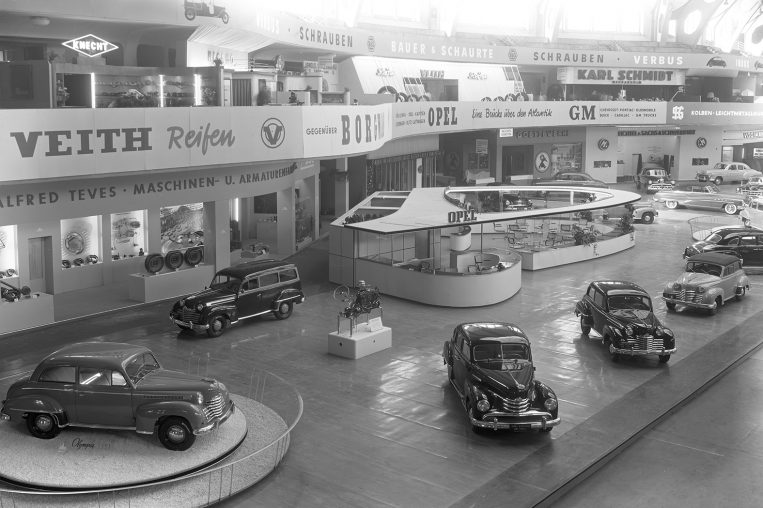
1951: Around 570,000 visitors made the pilgrimage to the Frankfurt Exhibition Centre for the first IAA after the World War II.
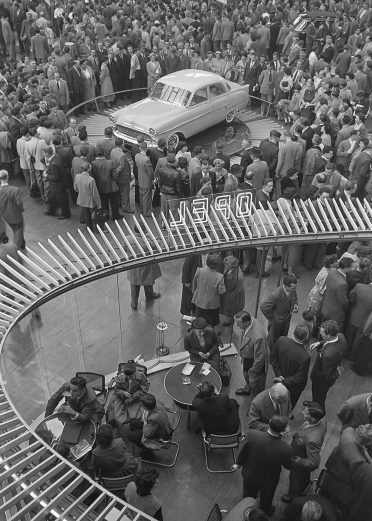
1955: At the 37th IAA Opel attracts visitors to Frankfurt again.
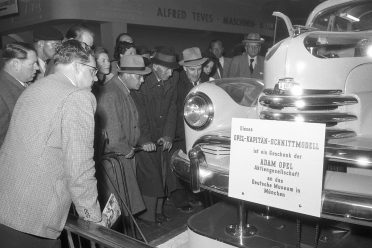
Eye-catcher: In 1953 this “Opel Captain cutaway model” was the focus of interest. Until the 1980s, the exhibitions were held every two years.
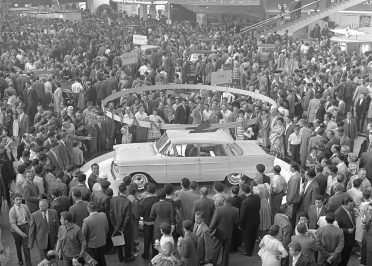
1959: In the summer a new Opel Kapitän appears, whose body had a flatter, stretched line.
![]()

![]()
First IAA after World War II in 1951 – Boom in the 50s
After World War II, the IAA – or IAMA – did not take place again right away. From 1947 to 1949, a few manufacturers showed their vehicles on a modest scale at the export fair in Hanover. Opel was not present there. It wasn‘t until 1951 that Opel and the IAA returned – and then twice: in the spring, the trade fair moved to Frankfurt am Main. In the autumn, the capital city gave its farewell performance with the “International Motor Show Berlin” – from now on, Hessen was to be the venue of the world‘s largest motor show every two years. Berlin‘s political isolation and an attractive, centrally located exhibition centre in Frankfurt were the main reasons for this decision by the organiser, VDA.
In keeping with the spirit of the times, the motto of the 1951 Opel stand in Frankfurt‘s Festhalle was “Opel – a bridge across the Atlantic”. This first post-war IAA on the Main already attracted 570,000 visitors. In the mid-1950s, the automotive industry was booming, with Germany rising to become the largest automobile manufacturer behind the USA. The German plants exported almost every second car manufactured in Germany. Over 300,000 people were employed in the automotive industry.
![]()
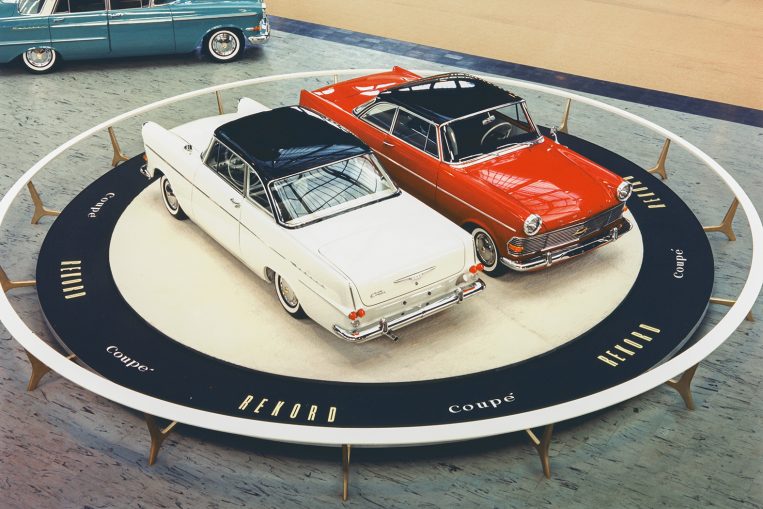
1961: The 40th IAA set a visitor record with 950,000 visitors – a record that was not to be surpassed until 1977. Starting in August, the body of the Opel Rekord Coupé will be manufactured at Opel‘s main plant in Rüsselsheim.

Well guarded: The GT, built from 1968 to 1973 and still Opel‘s style icon today, was launched at the IAA in 1969.
![]()

![]()
The Experimental GT inspires in 1965 – four years later the Opel CD
The IAA again became a major event in no time at all. Deutsche Post issued special stamps and postmarks. Opel used the exhibition near its home town to display its capabilities and products: the Olympia Rekord, the first Opel with a pontoon body, made its premiere at the 1953 IAA. In 1957 Opel presented the new Olympia Rekord, which was sold around 850,000 times within three years. Two years later, the Kapitän with a 2.6-litre engine made its debut.
The automobile continued to advance – and Opel was the first manufacturer to demonstrate its innovative strength with a concept car built entirely in-house: in 1965, Opel presented the Experimental GT at the IAA. The study was so enthusiastically received by the public and media that it became reality three years later. The Opel CD (Coupé Diplomat), a two-seat luxury coupé based on the Diplomat, was the star of the IAA in 1969. This concept car was also further developed and finally reached series production as the Bitter CD.
![]()
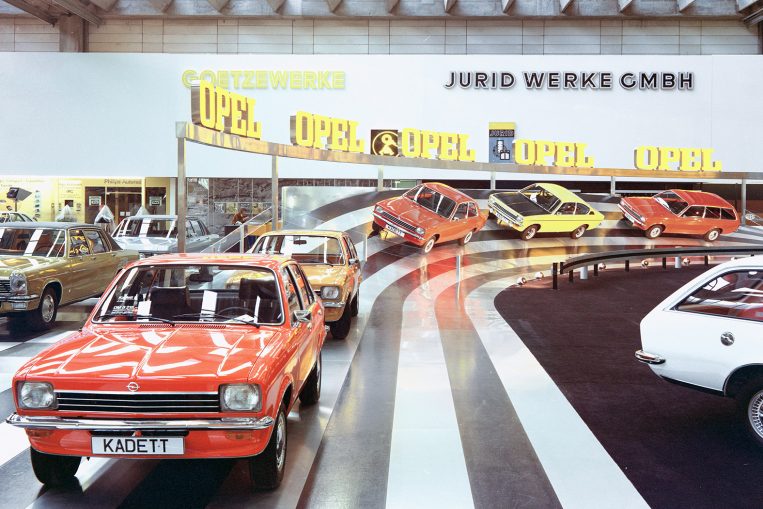
1973: Opel presents the Kadett C, which rolls off the production line about 1.6 million times between August 1973 and July 1979.
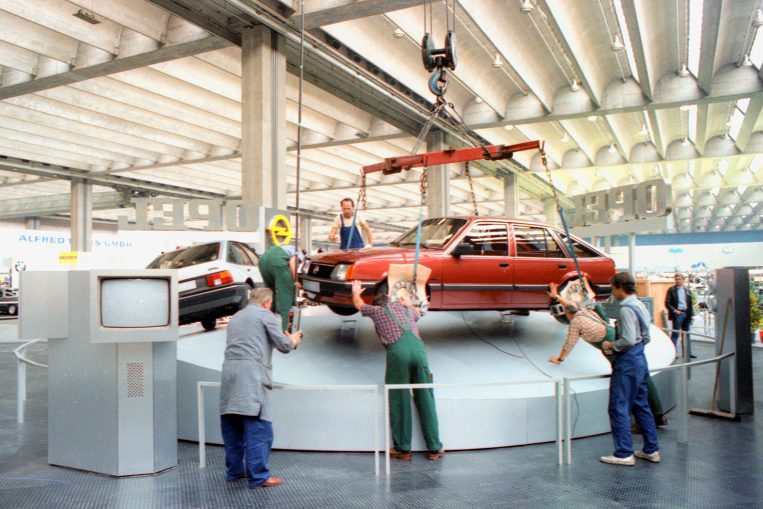
1981: An Opel Ascona C is positioned.
![]()

![]()
Petrol crisis leads to cancel – focus on energy saving issues in the 70s
The new decade began with a blow: the 1971 IAA was cancelled due to the petrol crisis. But soon it became clear that there was no way around the car. Consumers and politicians once again passionately avowed themselves to it. So it was no wonder that in 1973 the economical Opel Kadett C was in the spotlight of IAA coverage. In 1977, the West German automotive industry exceeded the four million mark of vehicles produced. More than ever, German cars were in great demand abroad. With a market share of 20 per cent, Opel was the largest German automaker.
Beginning in the 1970s, Opel increasingly focused on the areas of fuel consumption, safety and ergonomics. The best example of this was the Opel GT2, which thrilled visitors at the 1975 IAA with innovative sliding doors and a futuristic wedge shape. Other highlights of the 1970s included the world premieres of the Senator and Monza (1977) and the front-wheel drive Kadett D (1979).
![]()
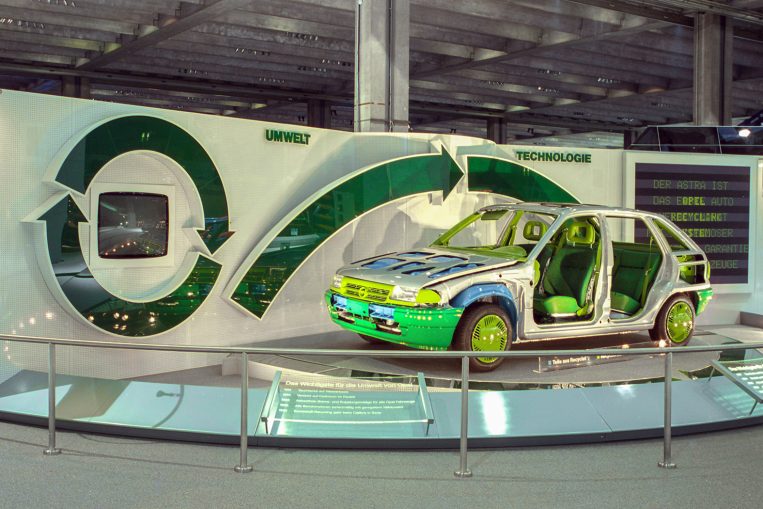
1991: The Astra F, successor of the Kadett E, is presented.
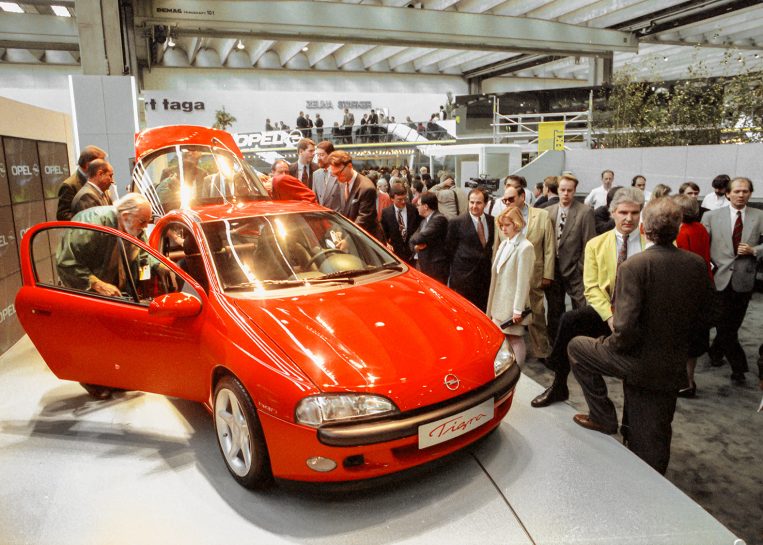
1993: The Opel Tigra celebrates its world premiere.
![]()

![]()
In 1981, Opel demonstrates its pioneering role in aerodynamics
Concentration on energy saving continued in the 1980s. During the introduction of new products, economy and aerodynamics were usually centre stage. In 1981, Opel demonstrated its pioneering role in the field of aerodynamics with the Tech 1; the drag coefficient of 0.235 was at world record level. At the 50th IAA in 1983, Opel presented the Junior, a small car study with a host of clever interior ideas – from interchangeable instruments and seat covers that could be converted into sleeping bags to a visionary navigation device. But sporty Opel models also continued to make a splash: for example the presentation of the Kadett Rallye 4×4 (1985) and the world premiere of the Calibra with tennis legend Steffi Graf (1989).
![]()
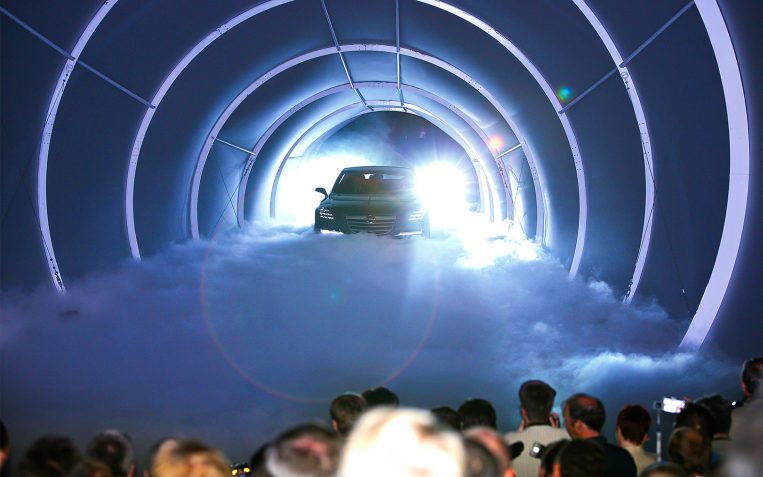
Design study: 2003 the Opel Insignia Concept introduces itself.
![]()

![]()
IAA split in 1991 – driving trade show stars provide a novelty in 1997
The IAA was split into two parts in 1991: in odd-numbered years, passenger cars are presented at the IAA in Frankfurt; in even-numbered years beginning in 1992, the IAA for Commercial Vehicles is held in Hanover. Visitors to the trade fair in the 1990s were also well advised to stop by Opel, like in 1993 when the Tigra made its premiere. Or in 1995, when the stand was dedicated to the Vectra B and the economical Corsa Eco 3. 1997 was a particularly spectacular year: the brand new Astra G roared between the trade show guests in the hall – accompanied by a gigantic musical show. Driving trade show stars were a novelty at the IAA.
At the 1999 IAA Opel showed how the engineers from Rüsselsheim were preparing for the challenges of the new millennium. The star of the “Future Theater” – the name of the Opel stand – was the lightweight G90 study.
![]()
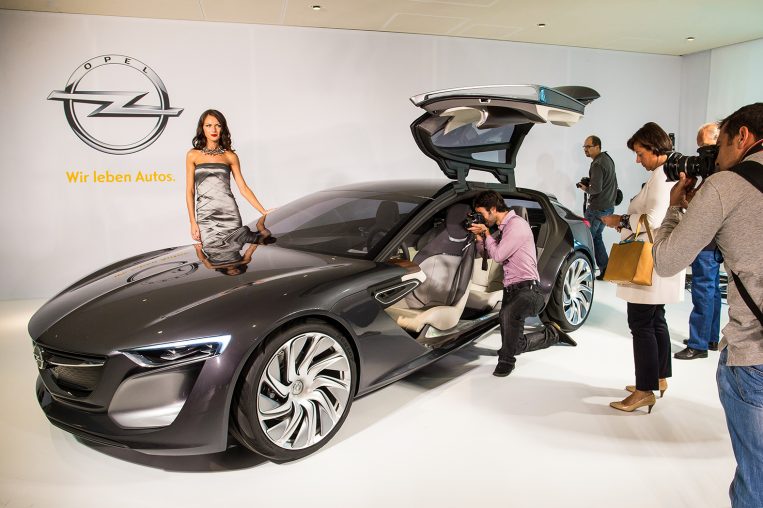
Gullwing doors: The Opel Monza Concept, exhibited in 2013, is presented with a futuristic design.
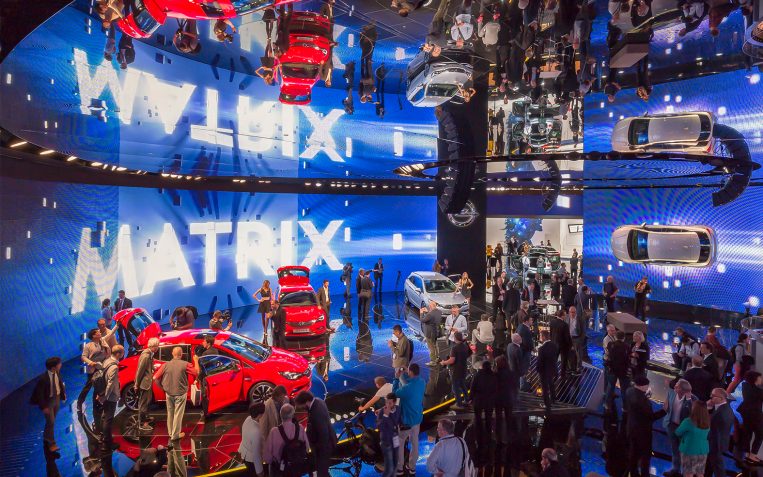
Welcome to the Matrix: In 2015, Opel focuses on the world premiere of the Astra K.
![]()

![]()
Record number of visitors in 2003 continues – focus increasingly on alternative drives
In 2003, the IAA registered a record attendance of around one million visitors. Opel’s racy Insignia Concept contributed to this success. The Opel studies of the following years were also always attention-getters: Antara GTC, Flextreme, RAK e, Monza Concept. And world premieres of series production cars continued to take place at the IAA: Opel Astra J, Astra K, Insignia GSi and Grandland X are the latest examples.
At the latest since the 2011 IAA, alternative propulsion, digitisation and mobility have been high up on the agenda. Proof was the “Hall of Electromobility”, the first of its kind at an automobile trade show. The Electro-Mobility Congress and the carIT Congress were also IAA premieres. Opel was a valuable discussion partner at all gatherings, as it had already introduced the Ampera, a fully electric car suitable for everyday use, in 2009.
![]()
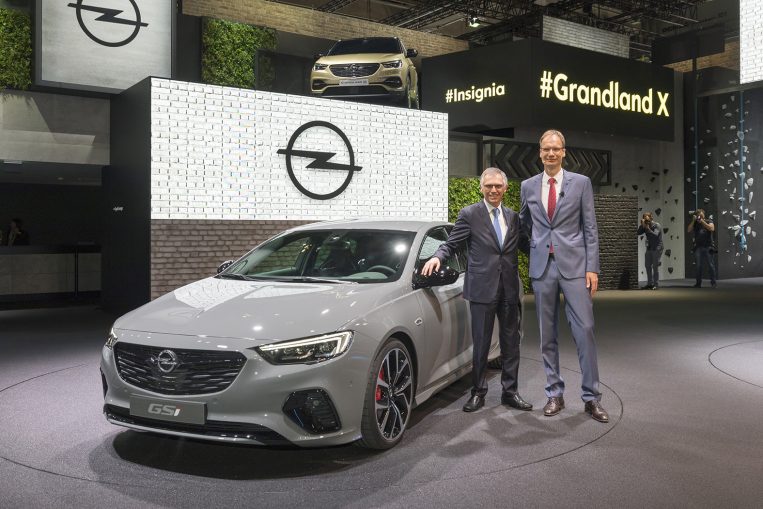
2017: Carlos Tavares, CEO of Groupe PSA, and Opel CEO Michael Lohscheller with the GSi version of the second Insignia generation.
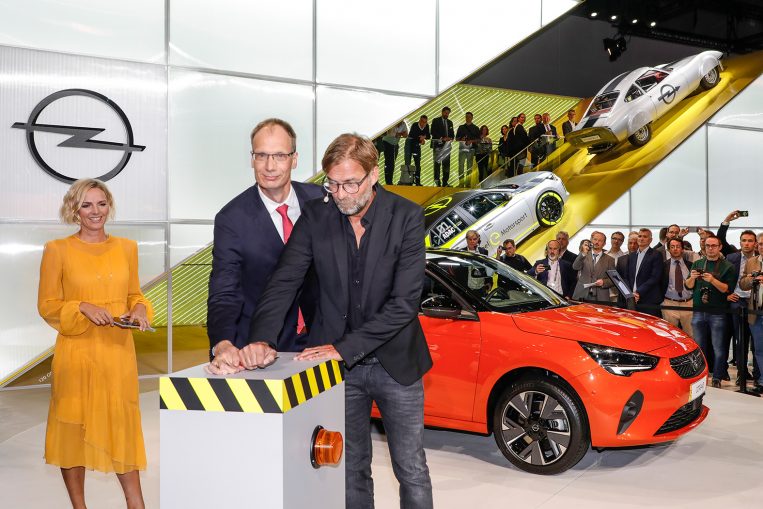
Everything on E: Opel CEO Michael Lohscheller (left) and Opel brand ambassador Jürgen Klopp open the Opel stand at the IAA 2019, which with the new Opel Corsa-e is all about electric mobility.
September 2019
